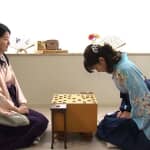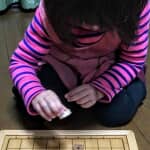Child-raising Shogi 19 October 2016
Five Trivia on Shogi
Shogi did not come out of the blue to be a popular game in Japan. As a matter of fact, its ancestor was originated in India, a game called “Caturaṅga.”
Caturanga came to Japan, and developed adjusting unique elements of Japan. Shogi added some new pieces and discarded some of the ancestor’s pieces on the way of the evolution.
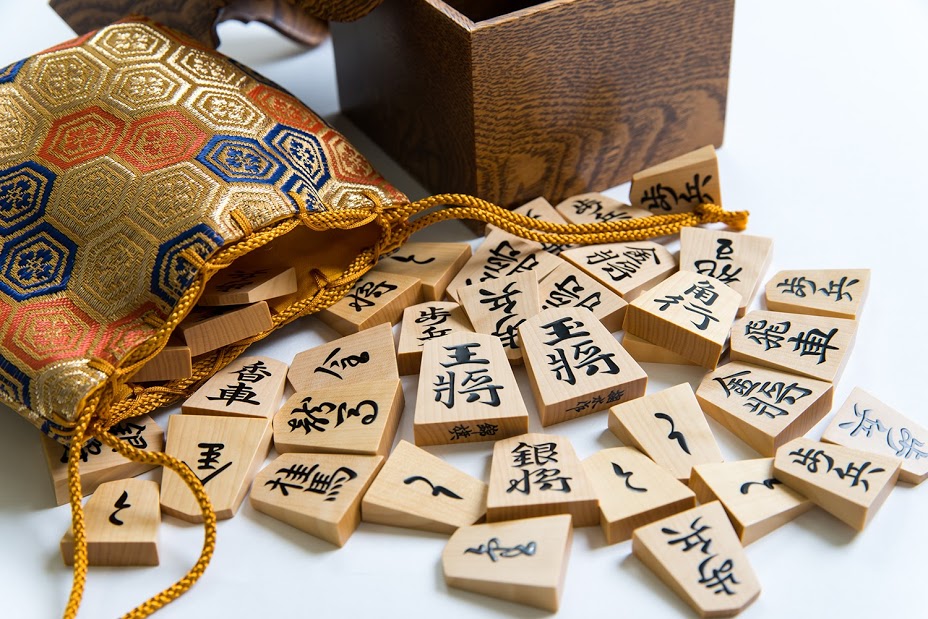
Today, I’d like to share five particularly interesting stories about Shogi. I’m sure that you feel like talking them to your children.
1. Japanese Shogi and the western chess are brothers!
Shogi has brothers all over the world. The western chess is also popular in Japan, and I think many people know it since it was seen in popular movies such as Harry Potter series. Chess and Shogi are actually brothers sharing the same ancestor, Caturaṅga.
Caturaṅga disseminated toward the East and the West, and changed itself adjusting to the environment in the each region.

After Caturaṅga was introduced to Europe, some new and very-European pieces such as Queen and Bishop were added in the fifteenth or sixteenth century.
In the past article, I mentioned about the rules and features of 4 brothers of Shogi born due to dissemination of Caturanga and their common ancestor. The brothers are; Xiangqi of China, Makruk of Thailand, Janggi of the Korean Peninsula, and chess of Europe.
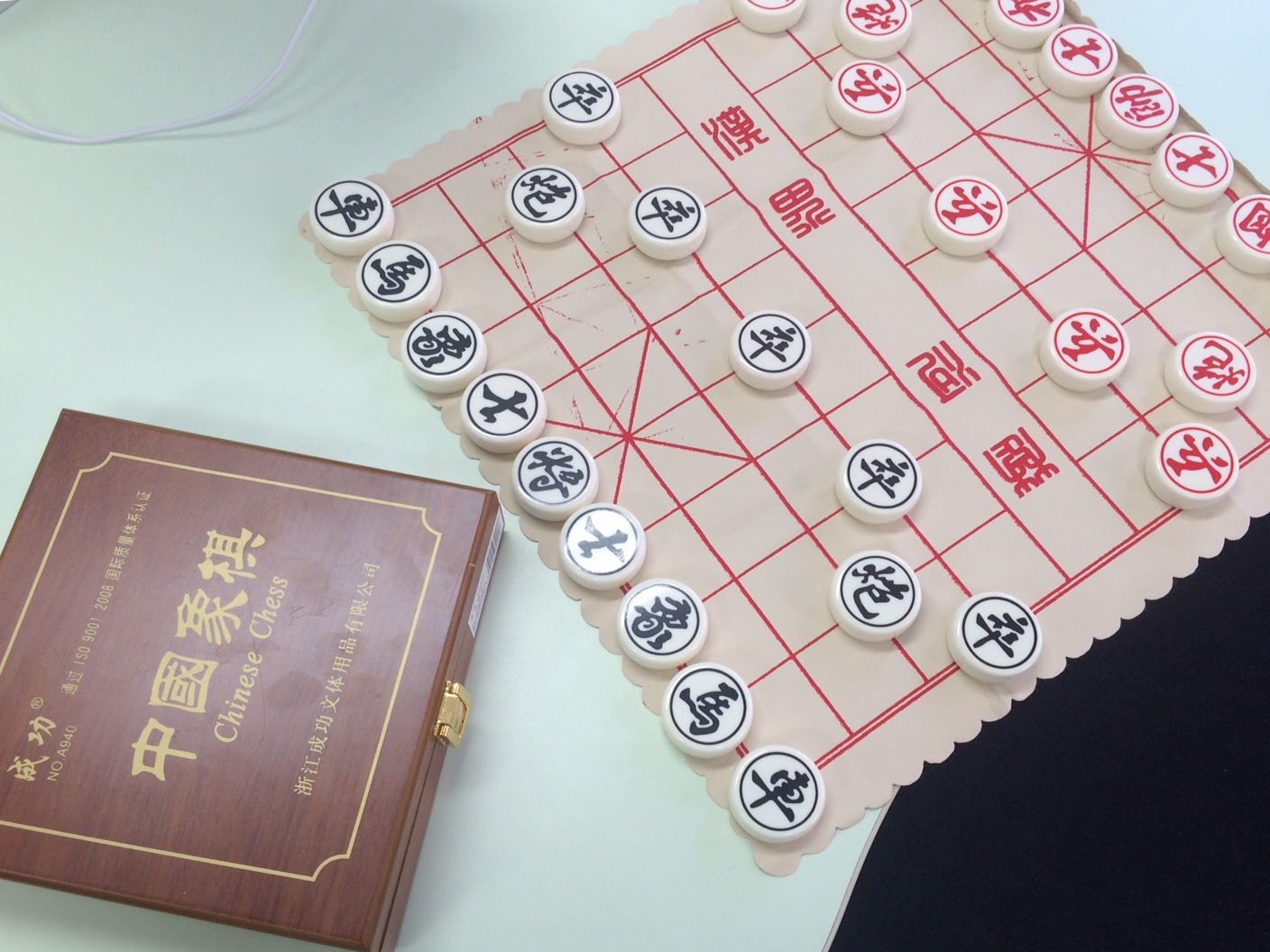
Xiangqi pieces have Chinese characters on the surface and the river is flowing in the center of the board. Also, Makruk of Thailand has pieces look like the Buddhist temples. The uniqueness of each country is reflected in the games.
2. Only Shogi allows us to reuse the pieces in hand.
I mentioned about unique elements of Shogi brothers in the above. Now, let’s find some special factors of Japanese Shogi. The most distinctive point of Shogi is that it allows us to reuse the captured pieces.
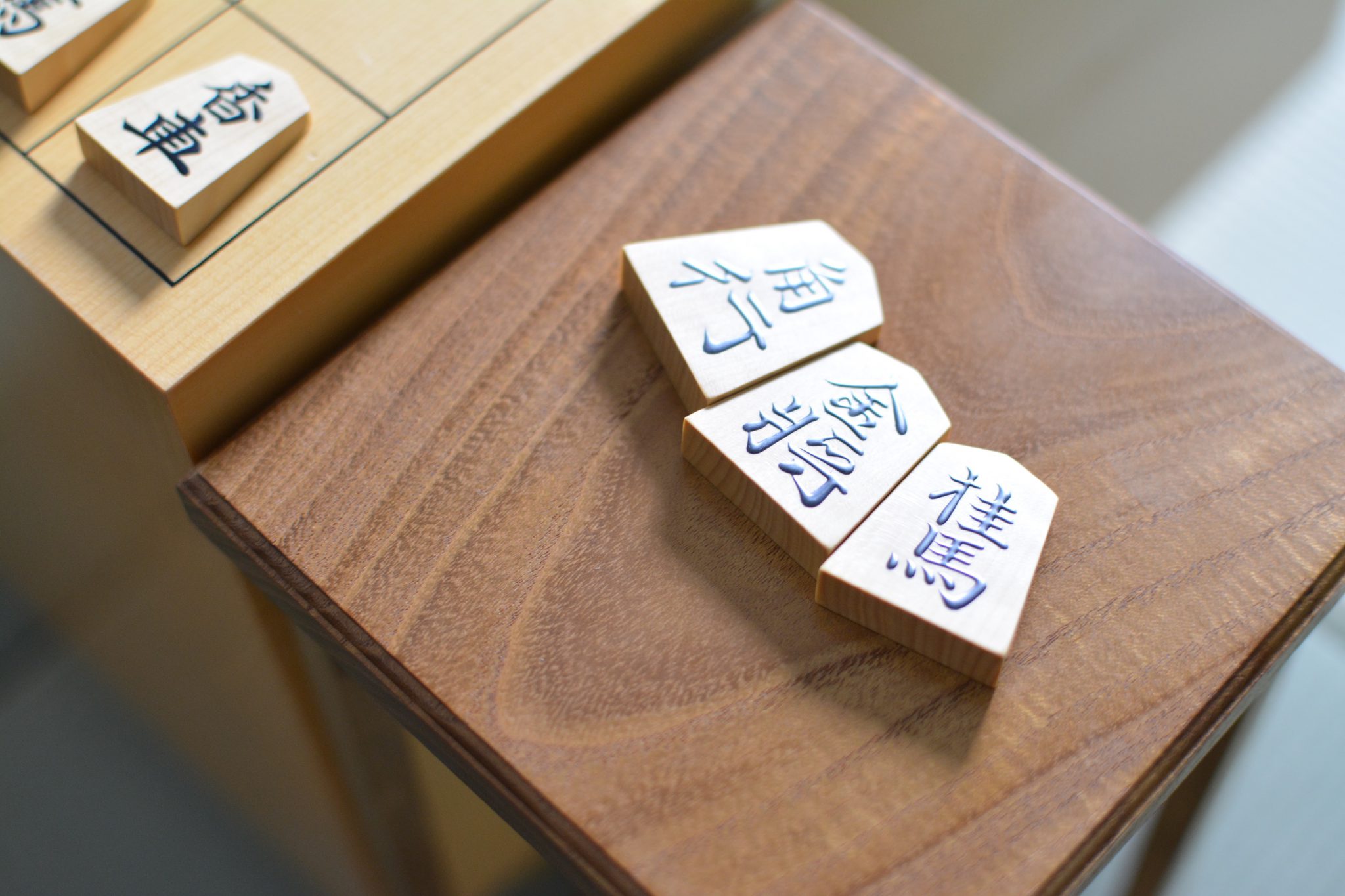
The Shogi brothers in the world adopt the rule of non-reusability. Under their rules, the captured pieces are excluded from the game.
It is said that Caturaṅga was created modeling war zones. Considering that, it is understandable that they found it difficult to reuse a piece which was once the enemy as the ally.
The rule of reusable pieces produced various unique strategies of Shogi which are not found in the brothers of Shogi. The followings are the basic piece moves of Shogi, and they are possible only in Shogi.
- Defense with Aigoma When your GYOKU is being Oute (checked) by the opponent HISHA (Rook) or KAKU (Bishop), you can defend your GYOKU with “Aigoma (piece that is put between the attacking piece and the piece under attack). If you cannot drop a piece of Aigoma, the pieces capable to move many squares would be far stronger pieces.
- There are not many tie games in Shogi. On the other hand, we see quite a few ties in its brothers’ since many pieces disappeared from the board in the endgames.
- KIN is an essential piece for defense placed right next to GYOKU. Yet, it becomes a trump of offense in the endgames. We cannot use a defense piece as a trump of offense such as “Atamakin (gold-on the-head; a fundamental mating position, in which a gold checks right in front of the king, and the king cannot escape backward and cannot capture the gold because it is protected.)” unless the rule of reusability is applicable.
There is, however, an unofficial chess rule called “Crazyhouse” which allows players to reuse pieces. Under this rule, “Aigoma with FU (Pawn)” or “Uchifuzume (Pawn drop mate)” are possible.
3. Only Japanese Shogi pieces are mono-colored.
Shogi has various other unusual elements besides the rule of reusable pieces.
First is the shape of pieces.
Shogi pieces have flat wedge-pentagon shape. Look at the pieces of the Shogi brothers.

You can see that all the Shogi brothers differentiate your pieces from the opponents’ by color.
Meanwhile, all the pieces should be in the same color in Shogi since the captured opponent’s pieces can be yours under the rule of reusability. It is confusing if there are different color pieces in your own team.

Thus, the shape of Shogi pieces should be a wedge-pentagon to clarify which direction they face at since Shogi differentiates your pieces from the opponents’ by the direction of the pieces.
4. Shogi has fewer pieces of dynamic moves than its brothers.
The piece of Queen in chess makes dynamic moves. It has the both moves of HISHA and KAKU. In addition, chess has two pieces of Rook which moves just like HISHA, and Bishop which is like KAKU, respectively.
Xiangqi and Janggi have two pieces of Chariot which moves just like HISHA of Shogi, and two pieces of Cannon which can move freely both vertically and horizontally. When Cannon wants to capture a piece and there is just one piece placed between the target piece and itself, a Cannon jump over the piece in the middle.
On the other hand, Shogi has only one HISHA which is like Rook of chess and Chariot of Xiangqi and Janggi, and only one KAKUGYO which is like Bishop of chess and freely moves diagonally. Shogi requires cooperation among the pieces with small moves to win. I think this reflects Japanese culture which highly evaluates cooperation.
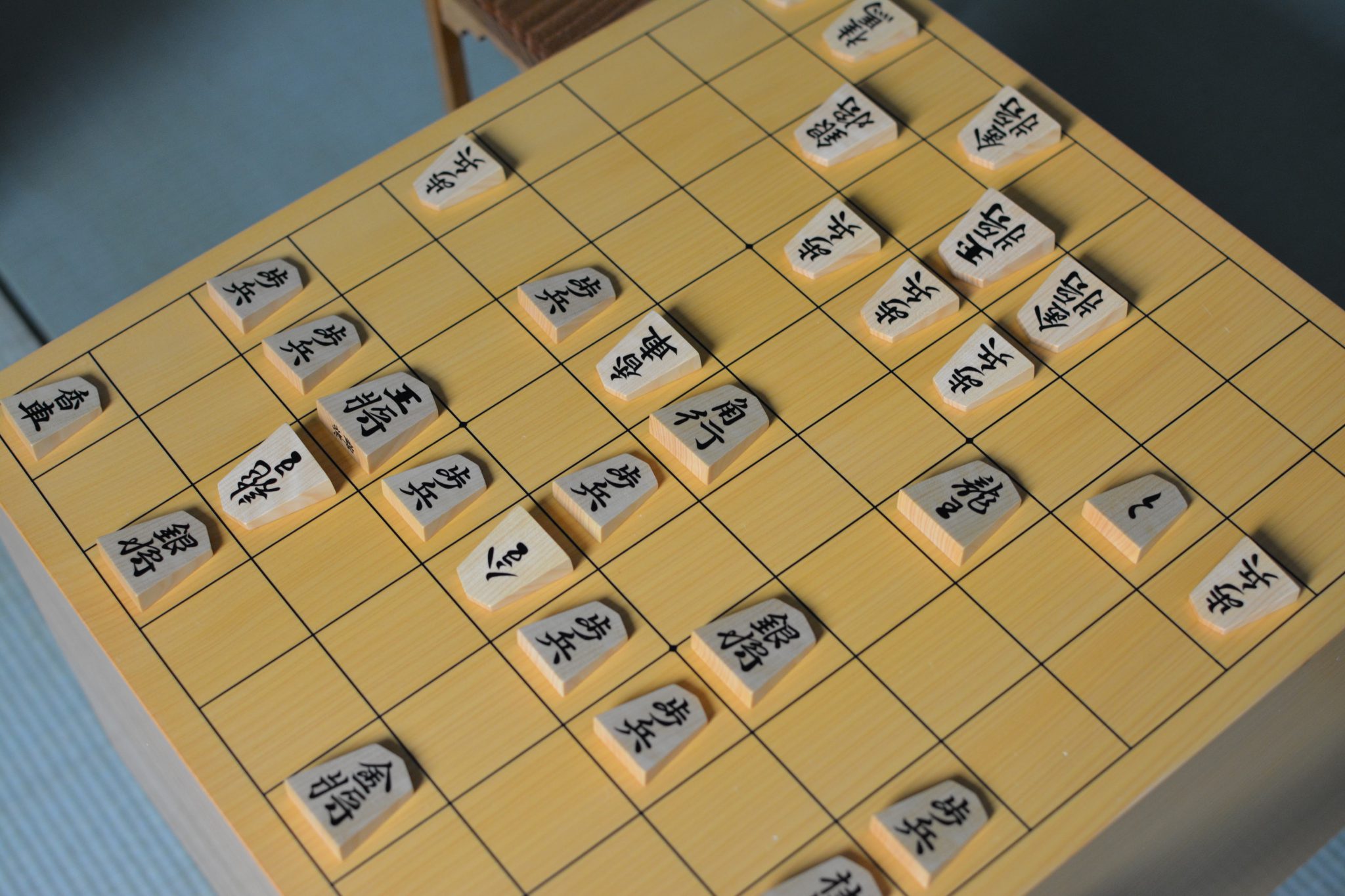
Also, it is impossible to break into the opponent’s camp only with the pieces on the board. Thus, we need to capture the opponent’s pieces to increase the pieces in hand.
It is a unique feature of Shogi to use many pieces of small moves to chase and mate the opponent’s king. Without cooperation among the pieces, it is impossible to break the opponent’s defense in Shogi .
5. There were DOSHO (Bronze general) and NAKOUDO (Match maker) in the old version of Shogi.
Shogi did not have its rule of today when it came to Japan. I would like to introduce three stories of “Heian Shogi,” “Chushogi,” and “Shoshogi” in the regard of the process of Shogi evolution.
Heian Shogi
This game was played in the 11th century. It is called “Heian Shogi” since it was played in the era of Heian.

The setup formation of Heian Shogi was just like the one in the above picture. Don’t you think this looks somehow familiar? The initial setup of Heian Shogi is almost the same as today’s, but it does not have HISHA or KAKUGYO. The rule of reusable captured pieces was not applicable to this Heian Shogi.
Chushogi
Chushogi had quite many pieces compared to Heian Shogi. This was probably because Heian Shogi had many tie games and thus, to solve this tie issue, they might have added many pieces. Chushogi is considered as a game of Muromachi era.
Chushogi has 21 types of pieces, 46 pieces all together. KAKUGYO and HISHA were produced under the rule of Chushogi. There were interesting pieces called “DOSHO,” “HANSHA,” and “NAKOUDO” as well.
Shoshogi
Shoshogi had an extra piece called “SUIZO” placed in front of each GYOKU, and the rule of reusable pieces was not applicable.
The specialty of Shoshogi is this SUIZO. SUIZO can move one square any directions except for backward straight. Furthermore, it is promoted to be “TAISHI (Prince)” when it enters in the opponent’s camp. This SUIZO is the son of the king.
When TAISHI is on the board, you do not lose even if your GYOKU is captured since TAISHI takes after GYOKU.
However, SUIZO does not exist in today’s Shogi. Under the rule of reusable pieces, we can make many TAISHI if we drop SUIZO in the opponent’s camp. It is said that the rule of reusable pieces might have caused SUIZO to disappear.
FURIBISHA (Swinging Rook) may become possible due to disappearance of SUIZO. 🙂
How is today’s article? I think that it is fun to play Shogi with your children talking about various Shogi stories. I hope you can use Shogi as a communication tool with your children since it is enjoyable regardless of players’ age or generation.
